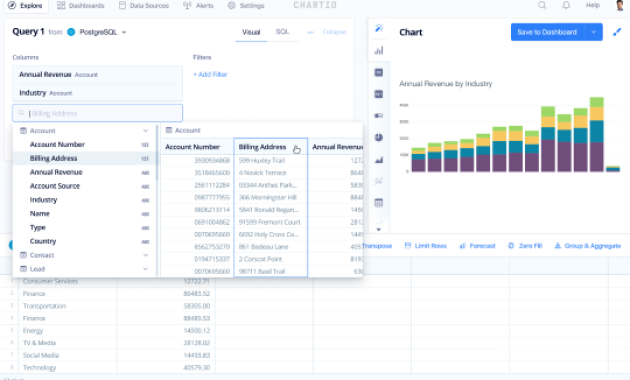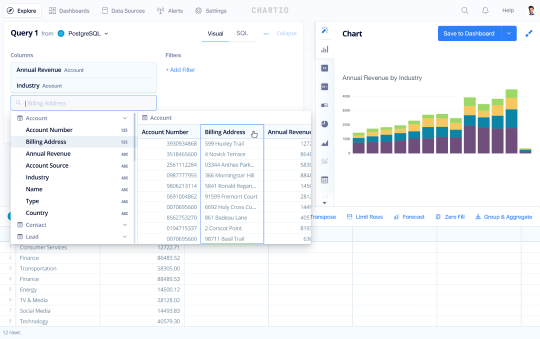
Learn to Use Business Intelligence Software With Real-World Examples
In today’s data-driven world, understanding and leveraging information is paramount for business success. Business Intelligence (BI) software provides the tools to transform raw data into actionable insights. This article will guide you through the process of learning to use business intelligence software. We will explore its functionalities and demonstrate its practical applications with real-world examples.
Understanding Business Intelligence Software
Business Intelligence software empowers users to analyze data. It helps them make informed decisions. This software goes beyond simple reporting. It provides advanced analytics capabilities. These include data visualization, predictive modeling, and data mining. BI tools collect, process, and present data in easy-to-understand formats.
The core function of business intelligence software is to provide insights. These insights help businesses understand trends. They also help businesses identify opportunities and mitigate risks. The software aggregates data from various sources. This includes databases, spreadsheets, and cloud services. It then presents the data in interactive dashboards and reports.
Key Features of Business Intelligence Software
Several features are common across most BI software platforms. Understanding these features is crucial for effective utilization. Here are some of the most important ones:
- Data Integration: The ability to connect to and pull data from various sources.
- Data Warehousing: Storing data in a centralized, organized manner for analysis.
- Data Visualization: Creating charts, graphs, and dashboards to represent data visually.
- Reporting: Generating customized reports based on specific business needs.
- OLAP (Online Analytical Processing): Performing multi-dimensional data analysis.
- Data Mining: Discovering patterns and trends within large datasets.
- Predictive Analytics: Forecasting future outcomes based on historical data.
- Data Security: Ensuring data privacy and security through access controls.
These features work together. They allow businesses to gain a comprehensive view of their operations. This comprehensive view helps in strategic planning and decision-making. The choice of software depends on specific business requirements. It also depends on the complexity of the data.
Getting Started: Steps to Using Business Intelligence Software
Learning to use business intelligence software can seem daunting. The following steps provide a structured approach:
- Define Your Business Goals: Identify the key questions you want to answer. Determine the specific insights needed to improve performance.
- Choose the Right Software: Select a BI tool that aligns with your needs and budget. Consider factors like ease of use and scalability.
- Connect to Data Sources: Establish connections to all relevant data sources. Ensure data is accessible and properly formatted.
- Clean and Transform Data: Prepare data for analysis. This involves cleaning, transforming, and validating the data.
- Create Visualizations and Reports: Design dashboards and reports to present your findings effectively. Use charts and graphs to highlight key insights.
- Analyze Data: Explore the data to identify trends, patterns, and anomalies. Use the software’s analytical capabilities.
- Share and Collaborate: Share your findings with stakeholders. Collaborate with colleagues to discuss and refine your insights.
- Iterate and Improve: Continuously refine your analysis. Adapt your approach based on new data and evolving business needs.
These steps provide a framework for using BI software. They help in extracting valuable insights from data. This ultimately leads to better business decisions.
Real-World Examples of Business Intelligence in Action
The true power of business intelligence software is evident in its real-world applications. Let’s explore some examples across different industries:
Retail
A major retail chain uses BI software. They analyze sales data. They identify top-selling products. They also identify popular product combinations. This allows them to optimize inventory. It also helps them tailor marketing campaigns. They can also improve store layouts. The result? Increased sales and customer satisfaction. BI tools provide a clear view of consumer behavior.
Healthcare
Hospitals leverage BI software. They analyze patient data. They track treatment outcomes. They also improve operational efficiency. They can identify areas for improvement. They can also reduce costs. They can optimize resource allocation. This leads to better patient care. This also leads to more efficient healthcare delivery. The implementation of business intelligence software is crucial.
Manufacturing
A manufacturing company uses BI software. They analyze production data. They monitor equipment performance. They also optimize supply chain operations. They can identify bottlenecks. They can also predict maintenance needs. This minimizes downtime. It increases productivity. It also reduces operational costs. BI software provides a competitive edge.
Finance
Financial institutions use BI software. They analyze customer behavior. They also assess risk. They prevent fraud. They tailor financial products. They improve customer service. This helps them make informed lending decisions. It also helps them improve overall profitability. BI is essential for financial analysis.
Marketing
Marketing teams use BI software. They analyze campaign performance. They track customer engagement. They optimize marketing spend. They identify the most effective channels. This leads to better ROI. It also leads to increased customer acquisition. The insights gained from BI are crucial for marketing strategies.
Choosing the Right Business Intelligence Software
Selecting the right BI software is crucial for success. Several factors should be considered:
- Ease of Use: Choose a platform that is user-friendly. It should also provide intuitive interfaces. This is essential for adoption across your organization.
- Scalability: Ensure the software can handle your current and future data volumes.
- Data Integration Capabilities: The software should easily integrate with your existing data sources.
- Reporting and Visualization: The platform should offer robust reporting and visualization tools. These tools will help you create impactful dashboards.
- Price and Support: Consider the cost of the software. Also, consider the level of customer support provided.
- Security: Ensure the software has adequate security features. This is essential for protecting sensitive data.
Popular BI software options include Tableau, Power BI, and Looker. Each platform has its strengths and weaknesses. The best choice depends on your specific business needs and technical capabilities.
Tips for Successful Implementation
Implementing business intelligence software requires careful planning. Here are some tips:
- Start Small: Begin with a pilot project. This allows you to test the software. It also allows you to refine your approach.
- Involve Stakeholders: Engage key stakeholders throughout the process. This ensures buy-in and alignment.
- Provide Training: Offer comprehensive training to your team. This will ensure they can effectively use the software.
- Establish Data Governance: Implement data governance policies. This will ensure data quality and consistency.
- Monitor and Evaluate: Continuously monitor the performance of the software. Evaluate its impact on your business goals.
By following these tips, you can maximize the value of your BI software. You can then drive better business outcomes.
The Future of Business Intelligence
The field of business intelligence is constantly evolving. Emerging trends will shape its future. These trends include:
- Artificial Intelligence (AI) and Machine Learning (ML): AI and ML are integrated. They automate data analysis. They also provide predictive insights.
- Cloud-Based BI: Cloud platforms offer increased flexibility and scalability.
- Data Democratization: Making data and insights accessible to all users. This empowers better decision-making.
- Embedded BI: Integrating BI capabilities directly into business applications.
Staying informed about these trends is crucial. It helps businesses leverage the latest innovations. They can then gain a competitive advantage. Learning to use business intelligence software is an ongoing process. It is a journey that requires continuous learning and adaptation.
Conclusion
Learning to use business intelligence software is essential. It is critical for businesses today. The ability to analyze data and make informed decisions is a key differentiator. This article has provided a comprehensive guide. It covers the fundamentals, key features, and real-world examples. It also covers implementation tips. By following these steps, you can harness the power of BI. You can then drive significant improvements in your business performance. Embrace the power of data. Start your journey toward data-driven decision-making. The future of business intelligence is bright. It is full of opportunities.
[See also: Data Visualization Best Practices]
[See also: Choosing the Right BI Tool for Your Business]
[See also: Data Analysis Techniques for Beginners]

